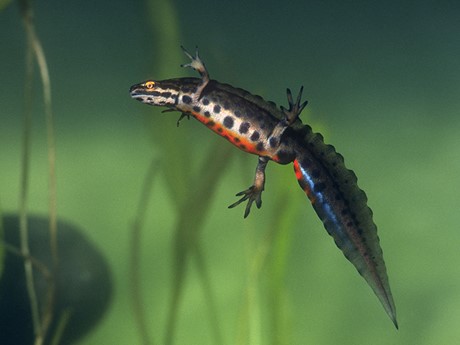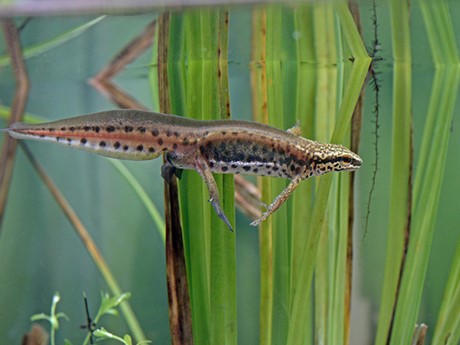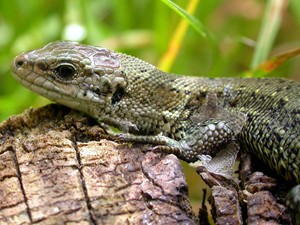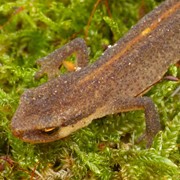Newts
There are three species of native newt in the UK. You can record any of these for Nature’s Calendar.
Smooth newt Lissotriton vulgaris
Adults grow up to 10cm in length. Skin is brown-grey, underside is yellow or orange, usually with black spots which can also be seen on the throat.
Males will develop a crest on their back in the breeding season. Most active at dawn and dusk.
Outside of the breeding season they may be seen in farmland, parks or woods. In the breeding season they can be seen in or around ponds.
Throughout the British Isles.
Palmate newt Lissotriton helveticus
Adults grow up to 9 cm long. Brown, green or grey skin with a yellow belly and usually dark spots. Males develop a filament at the tip of the tail in breeding season. Active during dawn and dusk.
Tolerant of dry conditions so can be found some distance from water. They show some preference for shallow ponds on acidic soils.
Common in Scotland, Wales and southern England, absent from central England and Ireland.
Great crested newt Triturus cristatus
Adults grow up to 15cm long. Black or dark brown skin, underside is orange with black patches. Males have a crest along their backs which is more pronounced during the breeding season. Active at night, spending the day at the bottom of ponds.
Prefer large ponds with an abundance of weeds and no fish.
Patchy distribution across the UK, absent from Ireland.
Note: great crested newts are strictly protected and a license is required to disturb them. If in doubt about identification, don’t handle any newt.
-

Smooth newt (Chris Mattison/Alamy) -

Palmate newt (Mike Lane/Alamy) -

Great crested newt (WTML)
Not to be confused with

Common lizard
Newts have a similar size and colouration to lizards, but newts have a smooth or warty skin and lizards have a scaly skin. If found in water is it much more likely to be a newt. On land, lizards are generally much faster than newts. (Patrick Roper/WMTL)
